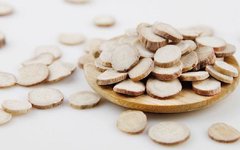Bai Shao (White Peony) Introduction

Bai Shao (白芍) is a tonic herb, first recorded in the Shen Nong Ben Cao Jing (Shen Nong’s Classic of Materia Medica). The medicinal part is the dried root of the plant Paeonia lactiflora. Bai Shao is characterized by its bitter and sour taste, and slightly cold nature. It enters the Liver (肝) and Spleen (脾) meridians. It mainly contains monoterpenes, sterols, tannins, and phenolic compounds, and has the effects of nourishing blood, regulating menstruation, astringing yin and stopping sweating, softening the liver and alleviating pain, and calming the liver yang. It is primarily used for symptoms such as blood deficiency with pallor, irregular menstruation, spontaneous sweating, night sweats, pain in the hypochondrium and abdomen, limb cramps and pain, hyperactive liver yang, headache, and dizziness. Below are three compound formulas containing Bai Shao, which we hope will help everyone understand and use Bai Shao correctly.
01
Si Wu Tang (Four Substance Decoction)
Formula: Shu Di Huang (Rehmannia Root), Dang Gui (Angelica Sinensis), Bai Shao (White Peony), Chuan Xiong (Ligusticum Chuanxiong)
Effects: Nourishes blood and invigorates blood circulation. Used for palpitations, insomnia, dizziness, pale complexion, women’s irregular menstruation, scanty menstruation or amenorrhea, presenting with a pale tongue and thin, wiry or thin, rough pulse.
● Shu Di Huang is sweet, warm, and thick in flavor, entering the Liver and Kidney, moistening and nourishing, serving as the monarch herb for nourishing yin and blood.
● Dang Gui nourishes and invigorates blood, working with Shu Di Huang to enhance blood replenishment and alleviate blood stasis, serving as a minister herb.
● Bai Shao nourishes blood and astringes yin, softens the liver and alleviates pain, working with Di and Gui to enhance the nourishing and blood-replenishing effects, and can also alleviate pain.
● Chuan Xiong invigorates blood and promotes qi, working with Dang Gui to enhance blood circulation, ensuring that the other herbs nourish blood without causing stasis, serving as an assistant herb.
02
Ba Zhen Tang (Eight Treasure Decoction)
Formula: Ren Shen (Ginseng), Shu Di Huang, Bai Zhu (Atractylodes), Fu Ling (Poria), Dang Gui, Bai Shao, Chuan Xiong, Gan Cao (Licorice, roasted)
Effects: Tonifies qi and nourishes blood. Used for pale or sallow complexion, dizziness, fatigue in the limbs, shortness of breath, palpitations, reduced appetite, pale tongue with thin white coating, and weak or vacuous pulse. Commonly used clinically for post-illness weakness, various chronic diseases, and women with irregular menstruation due to qi and blood deficiency.
● Ren Shen and Shu Di Huang work together to tonify qi and nourish blood, serving as the monarch herbs.
● Bai Zhu and Fu Ling strengthen the spleen and drain dampness, assisting Ren Shen in tonifying qi and supporting the spleen.
● Dang Gui and Bai Shao nourish blood and harmonize the blood, assisting Shu Di Huang in nourishing the heart and liver, both serving as minister herbs.
● Chuan Xiong serves as an assistant, invigorating blood and promoting qi, ensuring that Di, Gui, and Shao nourish without causing stasis.
● Gan Cao serves as a guide, tonifying qi and harmonizing the other herbs.
03
Bai He Guo Jin Tang (Lily Bulb Decoction to Preserve the Metal)
Formula: Bai He (Lily Bulb), Shu Di Huang, Sheng Di Huang (Raw Rehmannia), Mai Dong (Ophiopogon), Xuan Shen (Scrophularia), Dang Gui, Bai Shao, Bei Mu (Fritillaria), Jie Geng (Platycodon), Gan Cao
Effects: Nourishes yin, moistens the lungs, transforms phlegm, and stops cough. Used for chronic diarrhea, chronic dysentery, and spleen and kidney deficiency with cold symptoms. Commonly used clinically for chronic enteritis, chronic colitis, intestinal tuberculosis, chronic dysentery, and dysentery syndrome that are slow to heal due to spleen and kidney deficiency with cold.
● Bai He is sweet, bitter, and slightly cold, nourishing yin and clearing heat, moistening the lungs and stopping cough.
● Sheng Di and Shu Di are used together to nourish the kidneys and strengthen water, with Sheng Di also cooling the blood and stopping bleeding. Together with Bai He, they form a common combination for nourishing the lungs and kidneys, serving as the monarch herbs.
● Mai Dong is sweet and cold, assisting Bai He in nourishing yin, clearing heat, and moistening the lungs to stop cough.
● Xuan Shen is salty and cold, assisting the two Rehmannia roots in nourishing yin and strengthening water, clearing empty heat, and benefiting the throat, serving as minister herbs.
● Dang Gui treats cough and counterflow qi, working with Bai Shao to nourish and harmonize blood.
● Bei Mu clears heat, moistens the lungs, transforms phlegm, and stops cough, serving as assistant herbs.
● Jie Geng opens the lungs and benefits the throat, transforms phlegm, and carries the medicine upward.
● Gan Cao clears heat and drains fire, harmonizing the other herbs, serving as assistant and guiding herbs.
Precautions for Medication
1. Bai Shao should not be used with Li Lu (Veratrum).
2. Bai Shao is a cold herb; it should not be used in large amounts for conditions of external wind-cold, internal injury from cold, spleen and stomach deficiency with cold, or kidney yang deficiency.
3. When using Chinese herbs in combination with Western medicine, it is necessary to differentiate syndromes and treat according to individual clinical conditions. If you are taking other medications, please consult your doctor before use and inform them of all diagnosed diseases and ongoing treatment plans.
Introduction to TCM Experts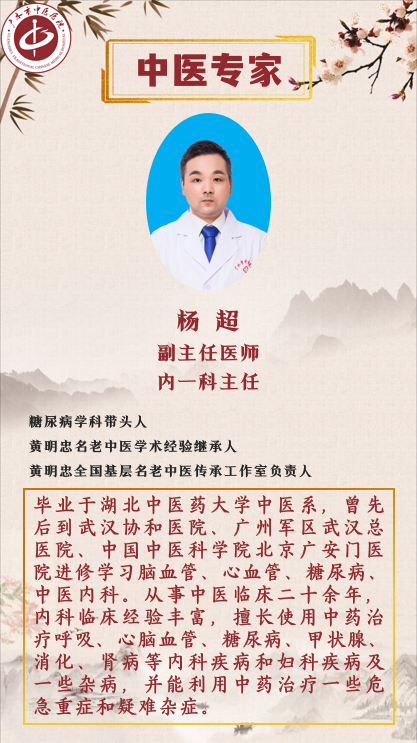
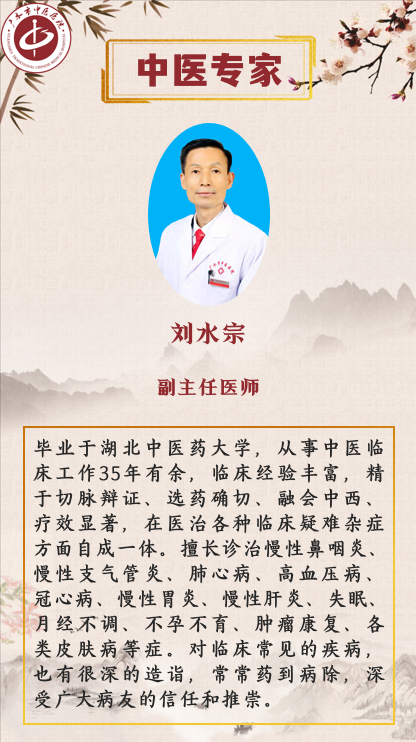
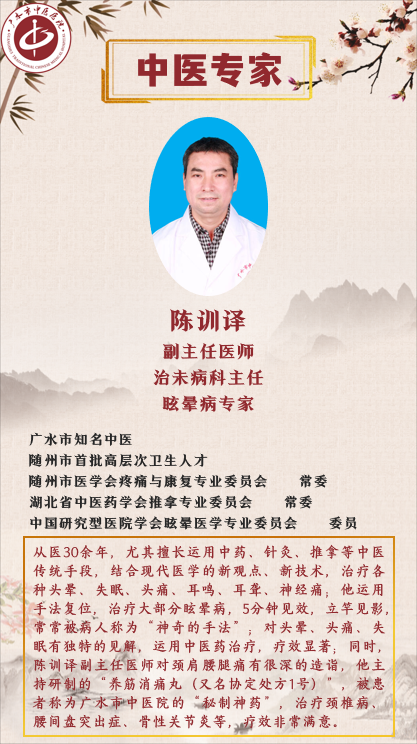
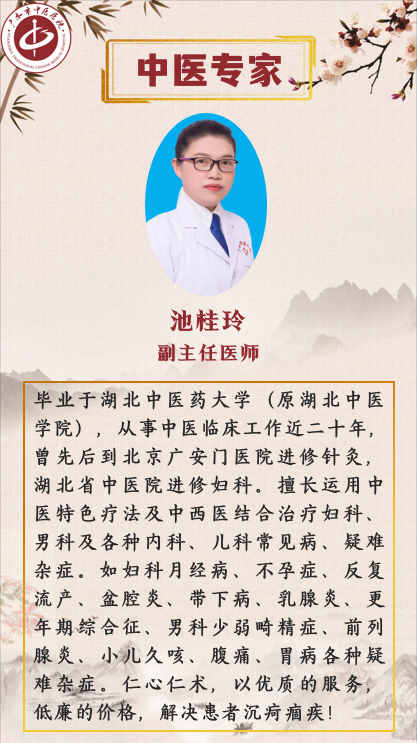
The Traditional Chinese Medicine Outpatient Department of Guangshui City Hospital adopts a “one person, one prescription” treatment plan, primarily using Chinese herbal decoctions, combined with Chinese medicinal pastes and suitable techniques, to provide high-quality TCM diagnostic and treatment services. Citizens in need of treatment are invited to bring their ID card or social security card to our hospital for appointment registration.
Edited by: Social Service Department
Reviewed by: Liu Minggui

